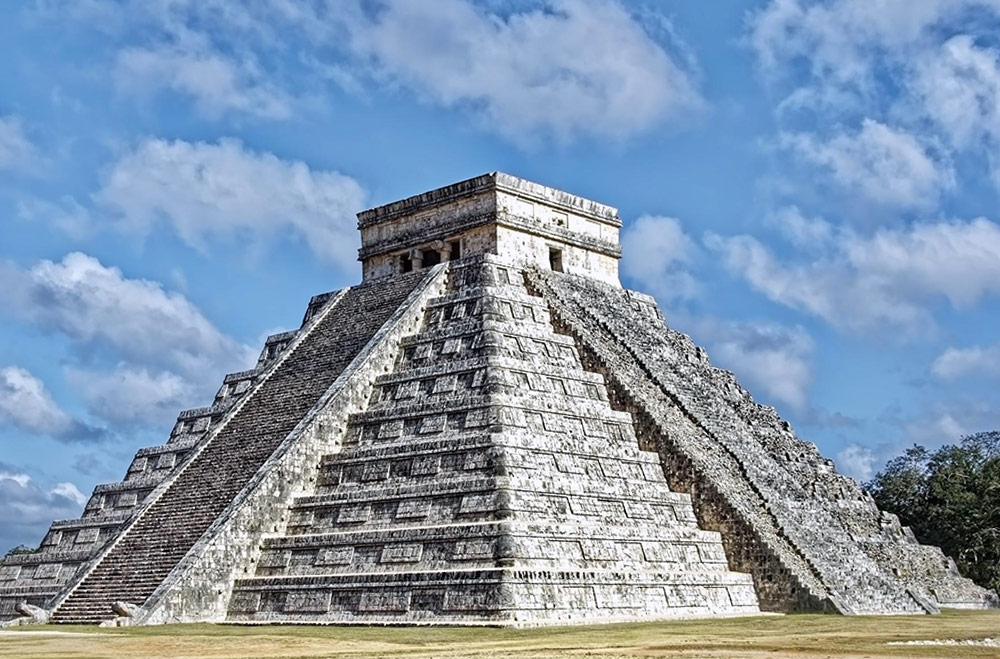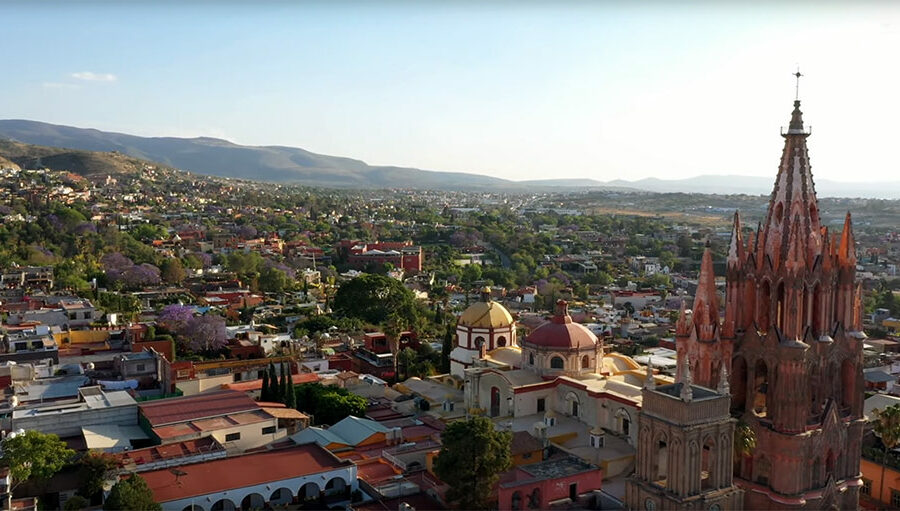More than 350,000 retirees from all around the world are currently living in Mexico.
You hear rumors about how the food is amazing, the weather is nice, and the cost of living is affordable. But on the other hand, you also hear about it being unsafe, and how its economy is on thin ice. So what is real and what is not? If it’s so bad, why does the number of people retiring in Mexico keeps on growing every year?
In this article, we’ll take a look at the myths and realities. Coming from someone who has actually experienced what is like living here. The goal is to help you weigh the pros and cons of retiring in Mexico so you can make an informed decision.
Maybe it is a good fit for you too.
Pros and benefits of retiring in Mexico

Low cost of living
The average Mexican family lives on less than $650 dollars a month.
There is a very clear disparity between the cost of living in the US or Europe versus living in Mexico. As a result, the average foreigner living in Mexico can save between 50% and 65% of their monthly expenses. And even then, live a more comfortable lifestyle.
The bulk of the savings is going to come in the form of housing expenses. Whether you rent or buy a house in Mexico, it is going to be very affordable. For example, a two-bedroom house in Merida with a private pool can be rented for $1,100 dollars. A similar place in Malaga, Spain (similar weather conditions and another popular retirement destination) would set you down $1,750 USD monthly.
As if that wasn’t enough. Electricity and water bills are generally included. Not gas though.
Obviously, there’s a wide range of housing options in Mexico for all kinds of budgets. There are charming small towns where a house can be rented for as low as $350 and there are mansions overlooking the ocean that are rented by the night for thousands of dollars. But whatever your budget is, the equivalent house is going to be cheaper.
Food, groceries, and services are other places where the prices in Mexico are much better. The following table will give you an idea of the average cost of living for a couple in the country.
| Item | Price |
|---|---|
| Groceries | $300 |
| High-speed internet access | $30 |
| Natural gas | $35 |
| Housekeeping (twice a week) | $240 |
| Dining out (once a week) | $220 |
If you are on a tight budget, check out our articles on the best places to retire in Mexico on a budget and cheapest beach towns to live in Mexico for some ideas of what towns might be a good fit.
Nice weather
One of the most attractive advantages of retiring in Mexico is the nice weather.
Mexico is located close to the equator, the imaginary line that divides Earth into northern and southern hemispheres. This gives the country a privileged location when it comes to weather, especially in the southern part of the country. It makes the seasons more stable and results in some areas being sunny all year round, even in the middle of winter.
As if that wasn’t enough, Mexico has access to the Atlantic Ocean, the Pacific Ocean, and the Caribbean sea along its huge coastlines. As a result, it has hundreds of towns and cities that can enjoy the benefits of this unique geographical location.
Even the cities in the center of the country share the benefits. For example, Mexico City sees a couple of rainy months and a few weeks of cold weather every year but that’s about it.
Affordable and high-quality healthcare
Mexico has both public and private healthcare systems.
The public healthcare system is paid for by the employers or it can be accessed voluntarily through a monthly quota. Foreigners living in Mexico can pay this fee to get access to it if they are on a temporary or permanent resident visa. If you are not paying for it, but due to an emergency you need to go to a public hospital, they’ll still treat you, but you’ll need to pay for the treatment as if it was a private hospital.
Private healthcare is generally considered to be of higher quality. There are many world-class doctors in Mexico that are at the top of their fields.
Even in the private system, prices are very affordable when compared to the US. For example, a root canal (endodoncia in Spanish) that would set you back between $700 and $1,200 without insurance, costs only between $90 and $250 with an excellent Mexican dentist.
Ex-pats residing in Mexico generally opt for a combination of the public and private systems as they both have their pros and cons.
Established retirement communities
Wherever you decide to live in Mexico, you will not be the first foreigner there.
Ex-pats that have decided to take the leap have formed strong communities in many areas of the country and are happy to help any newcomers. This makes the move so much easier as the language barrier becomes less of an issue and meeting new people is simpler in these groups.
To learn more check out our article on American retirement communities in Mexico.
An active lifestyle
There’s always something to do in Mexico. Whether you like golf, fishing, sailing, hiking, salsa dancing, or visiting pre-hispanic ruins, museums, art galleries, or flea markets, there’s something for all kinds of tastes.
The country also has a beautiful variety of natural ecosystems. In fact, it is the fourth place with the most biodiversity in the world. Because of this, there are also a lot of natural reserves to visit, landscapes to watch, and places to explore. If you are into giving back, there are also many natural conservation groups and animal shelters looking for volunteers to preserve all this.
Of course, after all that activity, you will want to take a break and enjoy one of the many spas, worldwide renowned restaurants, vineyards, etc.
No double taxation
Here’s one of the least mentioned advantages of retiring in Mexico, but one of the nicer ones.
Mexico has treaties with the US, Canada, and most European countries to avoid double taxation on income.
This means that as a temporary resident, you will not be taxed in Mexico for income generated in your home country. This includes income from social security, welfare, and investments. You will only have to pay taxes in Mexico for income generated within the country.
For people that decide to stay indefinitely in Mexico and get a permanent resident visa things shift the other way. You will be taxed in Mexico for the income, but not in the country of origin.
Cons and disadvantages of retiring in Mexico

Gentrification
Ironically, one of the reasons why some people are choosing to retire in Mexico from cities like Los Angeles, New York, or Vancouver has the same effect in these Mexican towns they are fleeing away from.
Gentrification happens when wealthier people flood an area, causing rising prices in real estate, and the cost of living. Locals end up being priced out and are eventually displaced.
One would think that when people with a larger income move into an area the local economy would benefit from it. And that’s true, but only for a while. If this growth happens too fast or without proper planning, it can end up being detrimental to the locals.
Many places in Mexico have already seen this effect. Cities like Cancun, Puerto Vallarta, San Miguel de Allende, and some neighborhoods in Mexico City are already out of budget for the average Mexican to live on. Rent prices are now listed in US dollars instead of Mexican pesos.
The general population has started to resent gentrification, especially with so many people trying the remote work lifestyle. Mexicans that have a reputation for being super friendly and welcoming to tourists are starting to turn around their opinion. Signs of dislike towards foreigners are quickly growing in some areas.
Occasional Earthquakes
Mexico is at the crossroads of five different tectonic plates. As a result, some parts of the country experience seismic activity regularly.
Earthquakes happen occasionally in the center and southwestern part of the country. Most of them are innocuous but for people that have never experienced one, they can be scary.
This doesn’t represent any real danger for most people. Mexico’s construction codes and regulations are some of the best in the world, and any house or building built after 1985 is extremely safe. But do know that it is something you might experience once or twice a year in places like Mexico City, Oaxaca, or Puebla.
If this is a factor for you when choosing a place to retire in Mexico, consider the northern parts of the country or the southeastern peninsula where seismic movements are much less common.
Corruption
Unfortunately, corruption is widespread in Mexico. It’s an issue the country has been trying to fight for decades with little success.
The best way to avoid having any bad experiences is to not do anything illegal so you don’t open the door to having any unnecessary interactions with the police or government officials. The activity where it’s recommended to emphasize caution is driving. If you are driving to Mexico make sure the care has valid insurance, and all your papers are in order.
Beyond that, as a foreigner, you will not have to deal much with it in your day-to-day. But it is definitely something that is there.
Driving rules seem optional
Speaking of driving, one of the biggest culture shocks for anyone coming from a different country is the way everyone drives in Mexico.
Overtaking on the right, unexpected cutting, and turning without signaling are way too common. Even if some of those are illegal, these written or unwritten rules just seem optional in Mexico.
So, whenever you decide to drive a car, make sure to be alert at all times and don’t expect the other drivers to follow the same rules of the road as in other countries.
Summary
- Retiring in Mexico has benefits such as a low cost of living, good healthcare, and no double taxation.
- The pros of retiring in Mexico generally outweigh the cons.
- Some of the disadvantages of living in Mexico are causing gentrification, a culture of corruption, and bad drivers.





